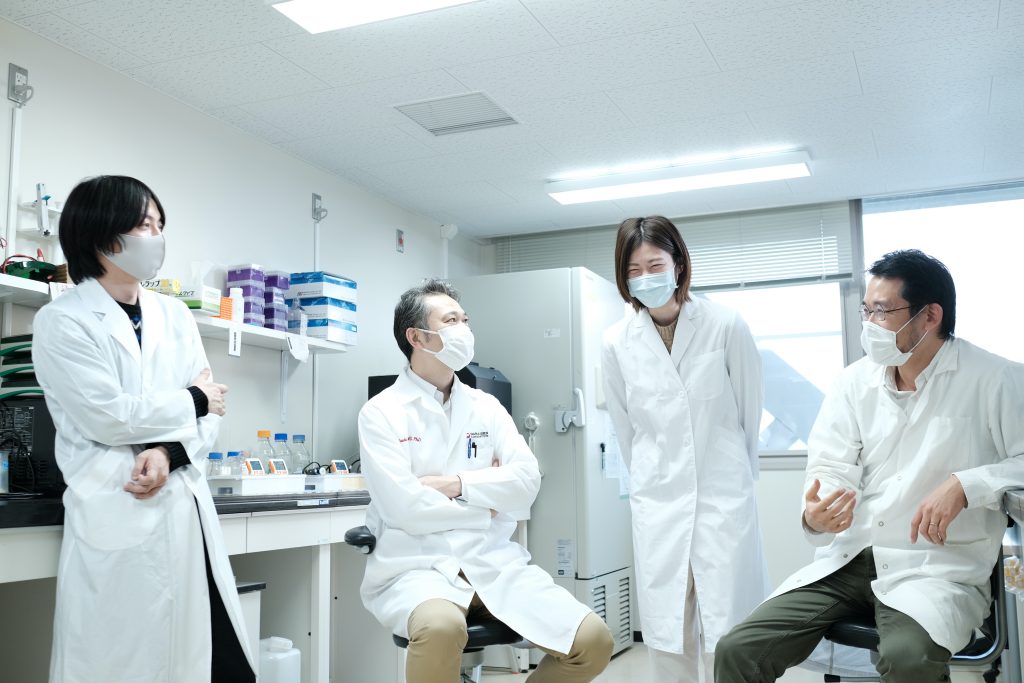Applying data science to understand musculoskeletal systems and develop disease treatments
※The content is current at the time of writing.
Data Science and Motor Science
Research Overview

Japan and other developed countries are entering a super-aged society with a very high percentage of the population over 65 years old. Various problems arise from the need for support from the surrounding community, such as the need for nursing care. It would be nice if we could live a long and healthy life, in other words, achieve healthy longevity, but many of the causes that hinder this are joint diseases and musculoskeletal disorders such as fractures and falls. Osteoporosis, which causes brittle bones that break easily, and osteoarthritis, which causes pain in joints such as the knees and prevents movement, are typical examples. Although there are treatments for these diseases, they are sometimes inadequate, and new treatments need to be developed. However, there is still much we do not know about the mechanisms by which the locomotor organs themselves (bones, muscles, joints, etc.) maintain health, so it is important to first understand them.
Research Features
Our challenge is to apply Big Data, which has been rapidly expanding and growing in recent years, to understand the locomotor system based on data science. In addition to the data we have acquired ourselves, we are independently analyzing various big data registered in public databases to extract genes necessary for the maintenance of locomotory organs, which will lead to the discovery of new molecular mechanisms and the development of therapeutic methods by controlling the functions of these genes. We are also working to discover new molecular mechanisms and control the functions of these genes to develop therapeutic methods.
As a practical example, genes are extracted from arthritis model mice created by various methods, and all genes are comprehensively analyzed using next-generation sequencers. By picking up genes whose expression is characteristically elevated in arthritic tissues and analyzing the data, we understand what is happening in arthritic tissues. Among these genes, we focused on the gene Uhrf1. By analyzing big data in public databases, we found that Uhrf1 expression is also high in the tissues of rheumatoid arthritis patients. So, when we created mice lacking the Uhrf1 gene and caused arthritis, we found that the arthritis was more severe than in normal mice. This means that Uhrf1 has a suppressive effect on arthritis. Therefore, we found that the disease state of arthritis was improved by administering drugs that prevent the degradation of Uhrf1 protein (Fig. 1). Analysis of gene-deficient mice also revealed that Uhrf1 is also important for muscle regeneration and bone growth.
Research Attraction
In this kind of research applying data science, instead of sticking to one gene from the beginning, we can first analyze many genes comprehensively with a bias-free approach and come across genes that are important for maintaining athletic health and controlling disease pathology. The great attraction is that there are new discoveries out there that were completely unthinkable before. Another great attraction is that such new discoveries not only allow us to encounter facts that no one has ever seen before, but may also lead to the development of new treatment methods to achieve healthy longevity.
Future Outlook
We apply our data science research methods not only to arthritis, which is the subject of this article, but also to other diseases of various organs and cancers. Our goal is to start with an understanding of living organisms and apply that understanding to the development of treatments for a wide variety of diseases.
Message to those who are interested in this research
Research is about “why?” and the intellectual curiosity of “I want to know! and the intellectual curiosity of “I want to know! For high school students who are smartphone natives and are familiar with information science, I am sure that research applying data science will be relatively familiar to them. We encourage you to make the most of your questions and curiosity to work toward a new understanding of life and its development.




